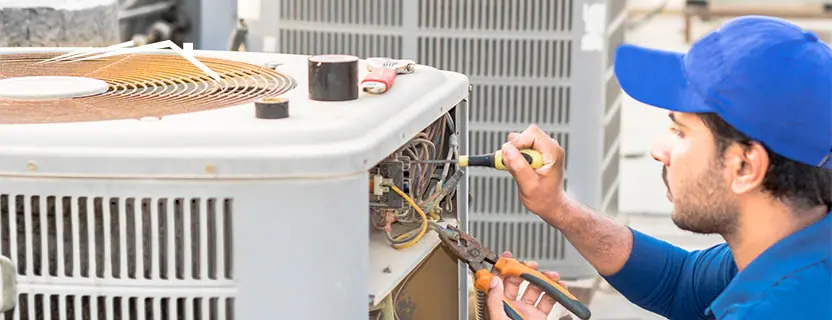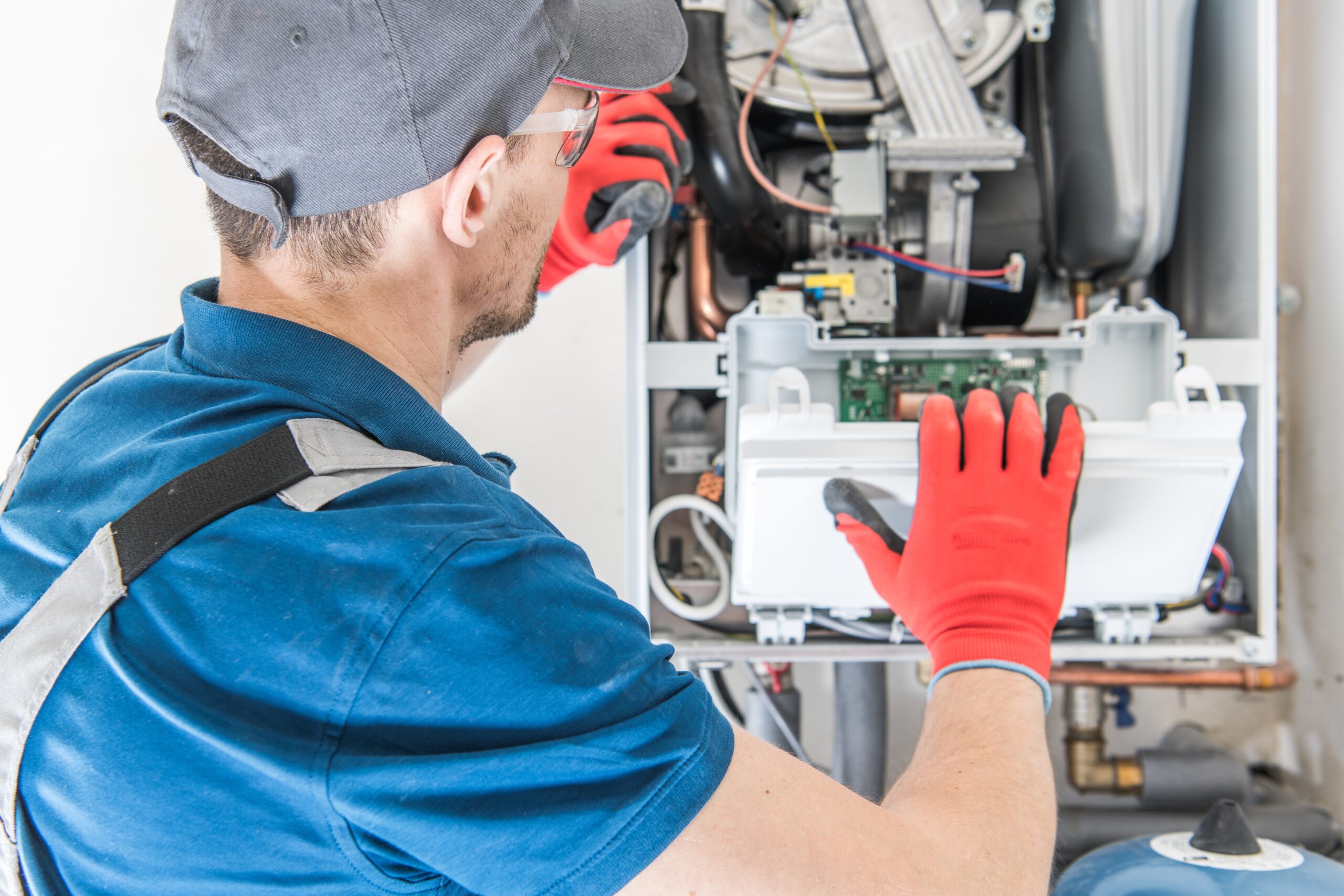Just How a Heatpump and Heating System Collaborate to Maximize Your Home's Heating Effectiveness
Recognizing exactly how a heatpump and heater collaborate is essential for house owners seeking efficient home heating services. Each system has its toughness, providing a well balanced technique to home comfort. The heatpump succeeds in moderate temperature levels, while the heating system delivers quick warmth throughout extreme cold. This synergy not only minimizes energy prices yet additionally improves the lifespan of both devices. What variables influence this collaboration, and just how can property owners optimize their advantages?
Understanding Warmth Pumps: How They Function
Although lots of people may be unknown with their inner functions, heatpump play a crucial duty in contemporary home heating systems. These devices operate by moving warmth from one location to one more, using the principles of thermodynamics. In chillier months, a warmth pump removes warm from the outdoors air, ground, or water, and transfers it inside to warm the space. Conversely, during warmer months, it can turn around the procedure, working as an air conditioning system by removing warm from inside to the outside.Heat pumps contain an evaporator, condenser, compressor, and expansion valve. The cooling agent within the system takes in heat as it vaporizes at reduced temperature levels and stress. The compressor then boosts the stress and temperature level of the refrigerant, enabling it to launch warmth as it condenses. This efficient process can substantially reduce energy consumption contrasted to standard home heating approaches, making heatpump a lasting option for environment control in homes.
The Function of Heating Systems in Home Home Heating
Furnaces play a vital function in home heating by offering a reliable source of warmth throughout the chillier months. They run by creating warmth with combustion or electric resistance, distributing it throughout the home through ducts or glowing systems. The performance of a heating system is commonly determined by its Yearly Gas Use Effectiveness (AFUE) rating, which suggests exactly how efficiently the unit transforms fuel right into heat.Furnaces can use various energy resources, including natural gas, gas, electrical energy, or oil, permitting home owners to pick the most ideal option for their requirements. Unlike warm pumps, which might have a hard time in severe cool, furnaces maintain regular efficiency, ensuring that indoor temperature levels stay comfy despite outside problems. Additionally, modern-day heaters commonly come equipped with innovative innovation, such as variable-speed blowers and smart thermostats, enhancing their efficiency and responsiveness. This convenience makes heaters a crucial element in all-encompassing home heating methods.

Benefits of Utilizing Both Equipments With Each Other
Integrating the staminas of both heaters and heat pumps can bring about an extra efficient and efficient home heating remedy. Making use of both systems permits homeowners to capitalize on the heat pump's power performance throughout milder temperature levels while counting on the furnace for even more severe cold conditions. This twin technique can considerably lower energy prices, as warm pumps take in less electricity than traditional home heating approaches when temperatures are moderate.Additionally, making use of both systems with each other can boost comfort degrees in the home. Heatpump can offer constant, also home heating, while furnaces can quickly elevate ambient temperature levels when needed. Additionally, the integration of both systems can prolong the lifespan of tools by decreasing wear and tear on each device, as they share the workload. Ultimately, home owners can delight in a well balanced, affordable home heating option that readjusts perfectly to varying climate condition, making certain a cozy and inviting home throughout the cold weather.
Just How Warmth Pumps and Furnaces Complement Each Other
They create a corresponding heating system that takes full advantage of performance and comfort when home owners integrate warmth pumps and heaters. Warm pumps run by moving warmth from the outdoors air or ground, making them extremely reliable in moderate climates. They excel during milder temperatures, offering affordable heating. Conversely, furnaces produce warm through combustion or electrical resistance, delivering strong, immediate heat during extreme chilly conditions.The mix of these 2 systems enables for dynamic modifications based on temperature level fluctuations. During warmer months or milder winter season days, the warm pump can take the lead, conserving energy and minimizing expenses. As temperatures drop, the furnace can effortlessly engage, guaranteeing consistent heat throughout the home. This synergy not just optimizes energy use but additionally boosts the life-span of both systems, as each unit runs within its suitable performance array. With each other, they develop a well balanced setting that adapts to differing climate needs.
Enhancing Effectiveness: Tips for Homeowners
Homeowners can enhance their home heating effectiveness with several sensible techniques. Developing a routine maintenance timetable, integrating wise thermostat innovation, and implementing reliable insulation and sealing options are essential steps. These measures not just improve convenience however additionally minimize power expenses.
Regular Upkeep Schedule
To ensure maximum heating efficiency, establishing a routine upkeep routine is vital for any home. House owners need to prioritize regular inspections of both heatpump and heating systems to determine peak efficiency. This consists of transforming air filters each to 3 months, as clogged filters can considerably reduce effectiveness. Furthermore, organizing expert upkeep at the very least yearly enables service technicians to recognize and resolve potential problems before they escalate. Property owners need to also clean the warm pump's outdoor system to avoid particles buildup that can prevent airflow. By sticking to a normal upkeep schedule, house owners not just improve their heater' effectiveness yet additionally expand their life expectancy, leading to greater comfort and decreased power costs throughout the colder months.
Smart Thermostat Integration
Integrating a smart thermostat into a home furnace can significantly boost power effectiveness, especially as it allows for accurate control over temperature settings. These tools can discover the home owner's timetable and choices, automatically readjusting the temperature level to maximize comfort while minimizing power usage. As an example, they can reduce heating throughout times when the home is unoccupied, reducing unneeded consumption. Numerous wise thermostats also give real-time energy use information, allowing homeowners to make educated choices about their home heating practices. In addition, remote gain access to through smartphone applications permits users to change settings from anywhere, making sure the home is warm upon return. Generally, wise thermostat integration not just boosts comfort yet significantly adds to power savings and efficiency.
Insulation and Sealing Solutions
Smart thermostats play a crucial function in power performance, however their effectiveness can be substantially enhanced by proper insulation and securing solutions. House owners need to prioritize insulating floorings, attic rooms, and wall surfaces to look at here now decrease warmth loss. Top notch insulation materials, such as spray foam or fiberglass, can significantly enhance thermal resistance. In addition, securing gaps around air ducts, doors, and home windows prevents cold air seepage and heat escape. Weatherstripping and caulking are effective approaches for resolving these leakages - ductless mini splits. Regular assessments for air leakages, in addition to making use of blower door examinations, can assist recognize trouble locations. By spending in insulation and sealing, house owners can maximize the efficiency of their furnace, ultimately leading to minimized power consumption and reduced energy expenses
Typical Myths About Heat Pumps and Furnaces
What misunderstandings surround heatpump and heaters? Several people erroneously think that warm pumps are ineffective in chillier climates. In truth, modern-day heatpump are developed to operate efficiently also in reduced temperatures, giving reliable home heating you can try here throughout winter season. Another typical misconception is that furnaces are constantly a lot more effective than heat pumps. Nonetheless, this depends upon the specific power resources and efficiency rankings of the units concerned. Some may likewise assume that utilizing both systems simultaneously is unneeded, but as a matter of fact, this mix can optimize heating performance, specifically during severe weather. Additionally, individuals commonly assume that heatpump call for consistent maintenance, when truthfully, they have comparable upkeep needs to typical heater. By unmasking these misconceptions, property owners can make more educated choices concerning their home heating options, ultimately causing boosted convenience and energy efficiency in their homes.
Upkeep Factors To Consider for Combined Equipments

Frequently Asked Inquiries
Can Warm Pumps Work Successfully in Extremely Cold Climates?
Heatpump can battle in very cool climates due to minimized performance and warm removal constraints. Innovations in technology have led to designs created for much better efficiency in such problems, boosting their viability in harsh environments.
For How Long Do Warm Pumps and Furnaces Normally Last?
Warmth pumps typically last 15 to twenty years, while heating systems have a life expectancy of 15 to thirty years. Routine maintenance can extend their longevity, making certain effective procedure and lowering the demand for early substitutes.

What Is the Typical Price of Putting Up Both Equipments?
The average price of installing both a heatpump and a furnace typically varies in between $5,000 to $10,000 - heat pump replacement ooltewah tn. Factors affecting this cost include system size, installation intricacy, and regional labor rates
Exist Tax Rewards for Using Energy-Efficient Home Heating Systems?
Lots of house owners ask about tax obligation rewards for energy-efficient heater. Various government and state programs usually provide refunds or credits, urging the fostering of lasting innovations to lower energy usage and promote environmental duty.
Just how Do I Pick the Right Size Heat Pump and Furnace?
Choosing the ideal dimension heatpump and heating system includes computing the home's square click here for more footage, considering insulation high quality, and examining regional environment. Consulting a professional can ensure ideal system efficiency and power effectiveness based upon certain requirements. heat pump installation ooltewah tn. Understanding exactly how a heat pump and heater work with each other is crucial for house owners looking for efficient home heating options. In chillier months, a warm pump essences warm from the outside air, ground, or water, and transfers it inside your home to heat the living area. When homeowners integrate heat pumps and heating systems, they produce a corresponding home heating system that maximizes efficiency and comfort. Warmth pumps operate by moving warmth from the outdoors air or ground, making them very efficient in moderate environments. Heat pumps can battle in exceptionally cold climates due to reduced performance and heat removal restrictions